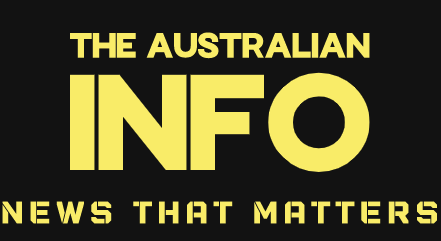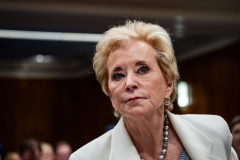
WASHINGTON, DC – JUNE 3, 2025: Linda McMahon, Secretary of Education, during a review of the … More President’s Fiscal Year 2026 Budget Request for Department of Education hearing on Capitol Hill in Washington, D.C., June 3, 2025. McMahon has indicated that the IDR student loan forgiveness tracker will return soon, but so far, that has not happened. (Photo by Salwan Georges/The Washington Post via Getty Images)
A major federal student loan servicer has started notifying borrowers that the Department of Education has temporarily halted payment counts associated with student loan forgiveness progress under IDR and PSLF, and removed the ability for borrowers to monitor their progress. The announcement, which appears to reflect ongoing systemwide problems at the department following mass layoffs last spring, is another setback for borrowers as the federal student loan repayment system remains plagued by dysfunction and backlogs. Meanwhile, Congress and the Trump administration have moved forward to implement massive changes to loan programs that will impact millions of Americans.
“Federal Student Aid has temporarily removed the forgiveness payment counts from StudentAid.gov for Public Service Loan Forgiveness and Income-Driven Repayment,” says an automated announcement on MOHELA’s main customer service phone line for Department of Education accounts. “Unfortunately, our representatives do not have any additional information related to your forgiveness counts. Please continue to visit StudentAid.gov for updates.”
Here’s what we know about MOHELA’s announcement, and what student loan borrowers should understand as the repayment system goes through the most significant changes in a generation.
Student Loan Forgiveness Tracking For IDR Remains Down, Payment Counts Not Updating
In January, during the last month of the Biden administration, the Department of Education launched a long-awaited feature of StudentAid.gov that allowed borrowers to track and review their progress toward student loan forgiveness under income-driven repayment plans. IDR plans provide borrowers with monthly payments tied to a formula based on income and family size, with any remaining balance eligible for loan forgiveness after 20 or 25 years in repayment. Until the IDR tracker went live, borrowers often had no idea where they stood on their progress.
The IDR tracker provided a high-level overview to borrowers of their IDR status. It showed how many months and years they had remaining until they would qualify for student loan forgiveness. And borrowers could access more detailed information showing a monthly breakdown of what was counting toward their IDR term, and what wasn’t.
But last spring, the Trump administration quietly removed the IDR tracker from StudentAid.gov, leaving borrowers in the dark again about their student loan forgiveness progress. The Department of Education indicated that this was necessary to address problems with the tracker and correct inaccuracies. In addition, the removal came after a key court ruling in February that suggested that student loan forgiveness under three IDR plans – ICR, PAYE, and the new SAVE plan – was inconsistent with congressional intent. As a result, the department has blocked student loan forgiveness under these plans.
“Forgiveness as a feature of the SAVE, PAYE, and ICR Plans is currently paused, because those plans were not created by Congress,” said the department in updated guidance issued in April. However, the department noted that student loan forgiveness under the IBR plan remains available. “ED can and will still process loan forgiveness for the IBR Plan, which was separately enacted by Congress. Payments on PAYE, SAVE, and ICR are counted toward IBR Plan forgiveness if the borrower enrolls in IBR.”
In June, U.S. Senator Elizabeth Warren (D-Mass) announced that Education Secretary Linda McMahon had agreed that the IDR tracker would be restored to StudentAid.gov soon.
“Secretary McMahon stated that she intends to soon restore the income-driven repayment (IDR) payment count tracker to Studentaid.gov, allowing borrowers to track their progress towards receiving debt relief, after taking down the tracker earlier in the Trump administration,” Senator Warren said in a June statement.
But so far, Secretary McMahon’s assurances have not materialized. Some borrowers are reporting that IDR counter data still accessible via StudentAid.gov is not updating, while others who should have reached the threshold for student loan forgiveness under IBR have yet to receive a discharge, suggesting that months are not being counted toward borrowers’ IDR repayment terms. If IDR payment counts are not getting updated in the department’s systems, it is unclear how borrowers would receive a discharge.
Student Loan Forgiveness Payment Counts For PSLF Not Getting Updated
Meanwhile, the department does not appear to have removed the student loan forgiveness tracker for the PSLF program, which is good news for borrowers. But PSLF payment counts are not getting updated in the system.
PSLF, or Public Service Loan Forgiveness, allows borrowers to discharge their federal student debt in as little as 10 years. Borrowers must typically repay their loans under an IDR plan while working in qualifying nonprofit or government employment on a full-time basis to receive PSLF credit toward loan forgiveness. PSLF tracking has been accessible via StudentAid.gov since the system was migrated from MOHELA last summer. However, borrowers are reporting that PSLF tracking information has not updated in StudentAid.gov for several months.
“My PSLF counts updated on FSA 4/4,” said one Reddit user. “I’ve submitted a ECF end of April and end of May. I’m super close –





